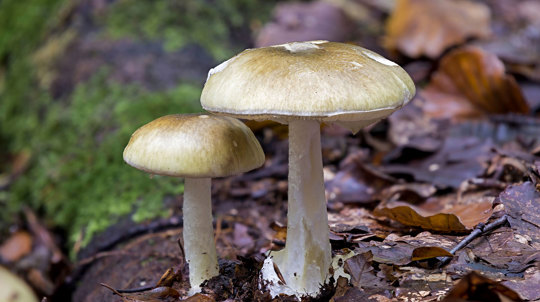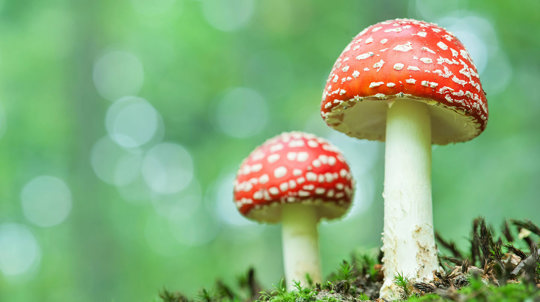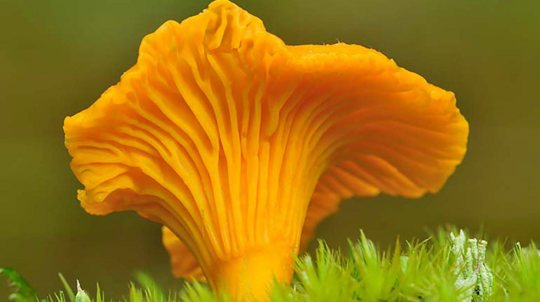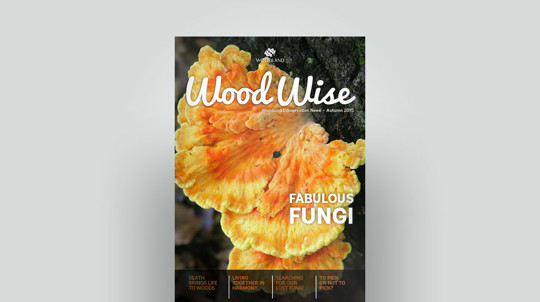There are over a hundred good, edible species growing in the UK.
Foraging in October: which wild mushrooms can you eat?

Content manager, botanist and tree lover
October is the season for wild mushroom hunting. The fruiting bodies of many species flourish in autumn with the return of the cooler, wetter weather.
As a nation, we’ve historically feared fungi rather than seen them as food. And for good reason - there are many incidents of mushroom poisoning each year. But the popularity of fungal forays continues to rise.
There are poisonous fungi out there, just like there are poisonous plants, so if you're thinking of food, you need to know exactly what you're doing.
And please remember that fungi are an important part of the woodland ecosystem so don't overdo it! Leave plenty behind for wildlife by following our top wild mushroom-picking tips below.
Wild mushroom picking tips
- Don't collect too much. Other species eat mushrooms too and they play an important ecological role. Some of our woods are sadly being over picked for wild mushrooms. Picking for commercial use is not allowed in any of our woods. On some sites we prefer you not to pick for personal use either. Always check before you go out.
- Know what you're picking - edible mushrooms can be confused with poisonous ones.
- Mushroom identification takes skill and practice - get a great ID book specifically for fungi.
- Choose species that aren’t easy to mix up with poisonous fungi – like the ones mentioned in this blog.
- Check whether any special cooking or handling is required.
- If you're in any doubt confirm the identity with an expert or don’t eat them.
- Don’t eat lots of new species all at once – even if you know what they are. Some people can be sensitive or have allergies.
- Don’t rely on common names – sometimes the same common name can refer to many different species.
- Follow our sustainable foraging guidelines.
Can’t tell the difference between the deadly and the delectable? Mushroom identification is a challenge, so it's better to stick to the supermarket if you’re not sure when it comes to foraged mushrooms.
Bay bolete (Imleria badia)
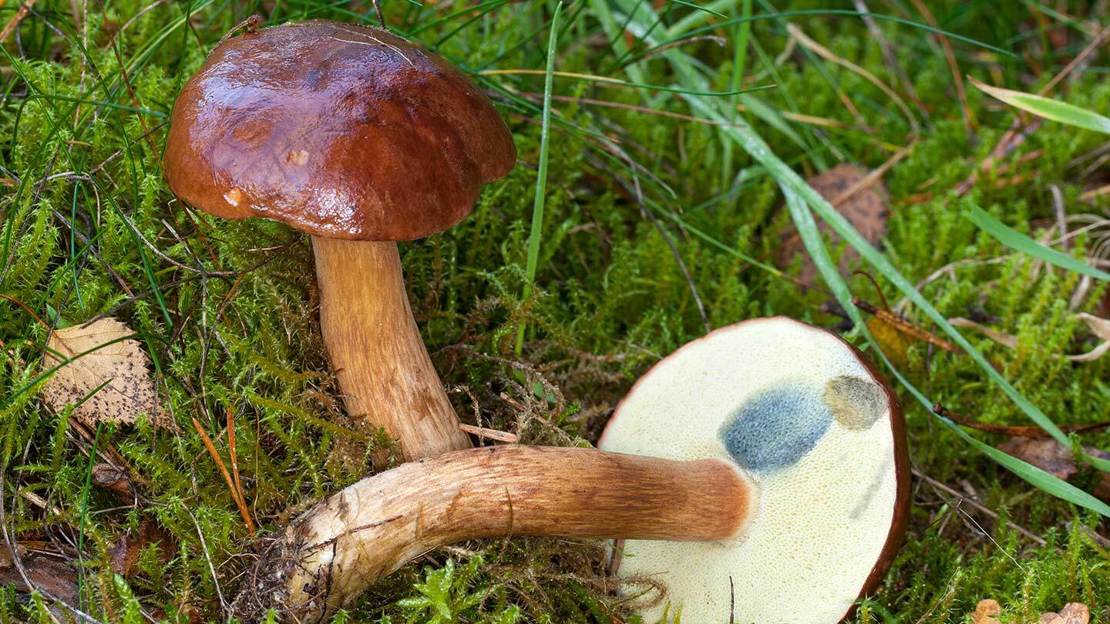
Its scientific name ‘badia’ means chestnut brown and refers to the colour of its cap. The common name is probably also derived from the colour of the cap, like the coat of a bay horse. It’s an excellent edible mushroom.
What it looks like: the rounded cap is 4–15cm wide and is light to dark brown, smooth and slightly sticky when wet. The flesh is white or slightly yellow. The stem is smooth and cylindrical and is streaked with the same colour as the cap. On the cap underside are small yellowish pores that bruise bluish-grey when injured or pressed.
Don’t confuse it with: it’s not that easily confused with other species except for other boletes, which are generally safe. Avoid boletes that have red colouring on the mushroom (stem, pores or cap) or if they turn vivid blue immediately after they’ve been sliced vertically with a knife.
Where to find it: look for it between August to November on the ground, or on decaying tree stumps. One mushroom can make an excellent meal for two because they are large and chunky.
How to use it: it’s better when young as the flesh is firmer. They can be eaten in the same way as the more familiar penny bun (Boletus edulis) and dried too. It’s comparable in flavour and apparently has the advantage of being less frequently infested with maggots.
Beefsteak fungus (Fistulina hepatica)
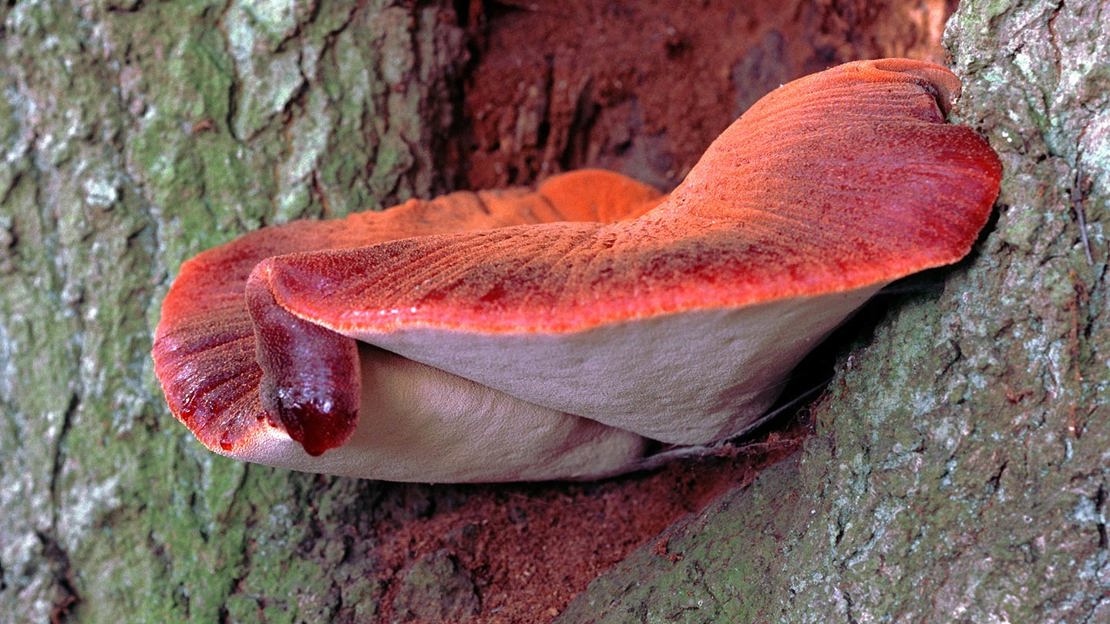
Also known as ox tongue fungus, it's not difficult to see how it got its name. When young it resembles a tongue poking out of a tree trunk, and as it matures it looks more like a piece of liver! This fungus causes brown rot in trees which gives the timber a rich colour known as 'brown oak' which is sought after by furniture makers.
What it looks like: this bracket fungus can reach a diameter of up to 25cm with a thickness of 6cm. It exudes a watery blood-like latex. The upper surface is deep red and its underside is covered in tiny pores and is a pale creamy colour that bruises deep red-brown.
Don't confuse it with: you're not likely to confuse this species with anything else.
Where to find it: it's quite a common fungus - look for it late summer to autumn close to the ground on oak trunks and stumps. You could also find it on sweet chestnut.
How to use it: when sliced, its flesh has a marbled texture a bit like braising steak and it drips red fluid that can easily be mistaken for blood. It has a strongly acidic, sour flavour and rubbery texture. Sliced very thinly, young beefsteak can be eaten raw in salads. If you're cooking chunks of it, it may take a fair bit of simmering to soften. Some foragers say it's best cooked in creamy sauce to temper its acidity.
Charcoal burner (Russula cyanoxantha)
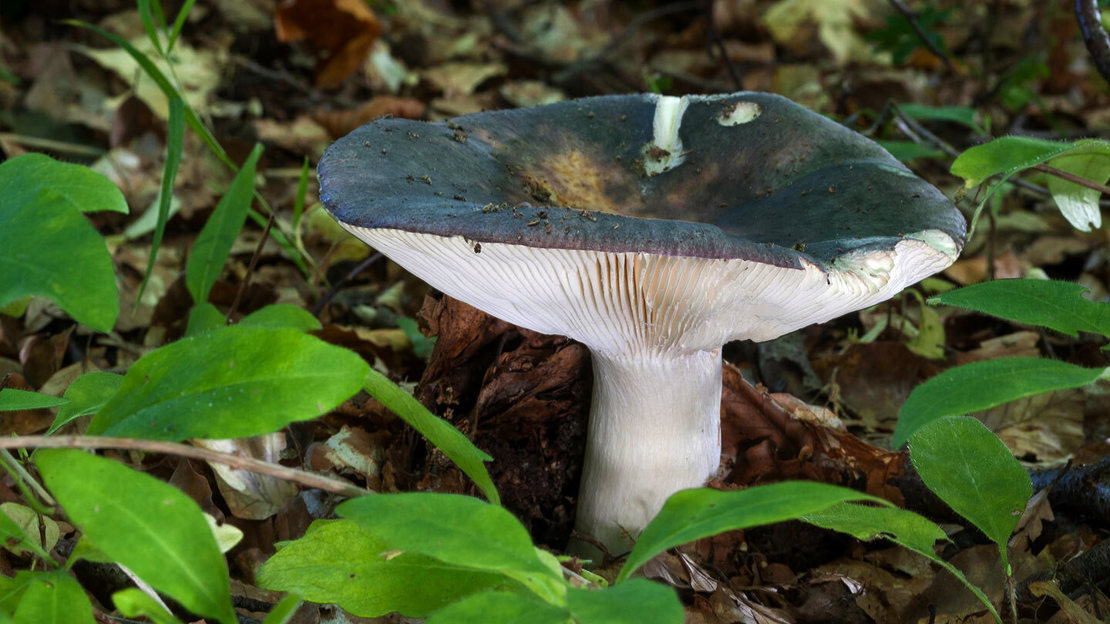
Charcoal burner is a beautiful looking mushroom that tastes good too. It’s common in woods from summer through to autumn.
What it looks like: a firm, rounded cap 7-12 cm across. Cap colour is very variable, with violets, greys, pinks, greens and yellows, making it well camouflaged against the woodland floor. It has a thick white stem. The gills under the cap are white, soft and flexible.
Don’t confuse it with: the fragile russula (Russula fragilis) which is also very variable in colour but is hot, bitter and inedible, and grows under broadleaved trees and conifers. If you’re not experienced in mushroom identification, the russula (also known as brittlegill) family of mushrooms can be very daunting! A few will give you a tummy upset but they are not deadly.
Where to find it: look for it on the ground in broadleaved woods, mostly beech and oak.
How to use it: excellent, firm-textured mushroom and this species is considered to be the best of the edible russulas as it doesn’t go soggy when cooked. It has a crunchy, nutty texture and a mild taste. Sautée with onions and garlic, serve with meat dishes or use for omelettes, soups and stews.
Field mushroom (Agaricus campestris)
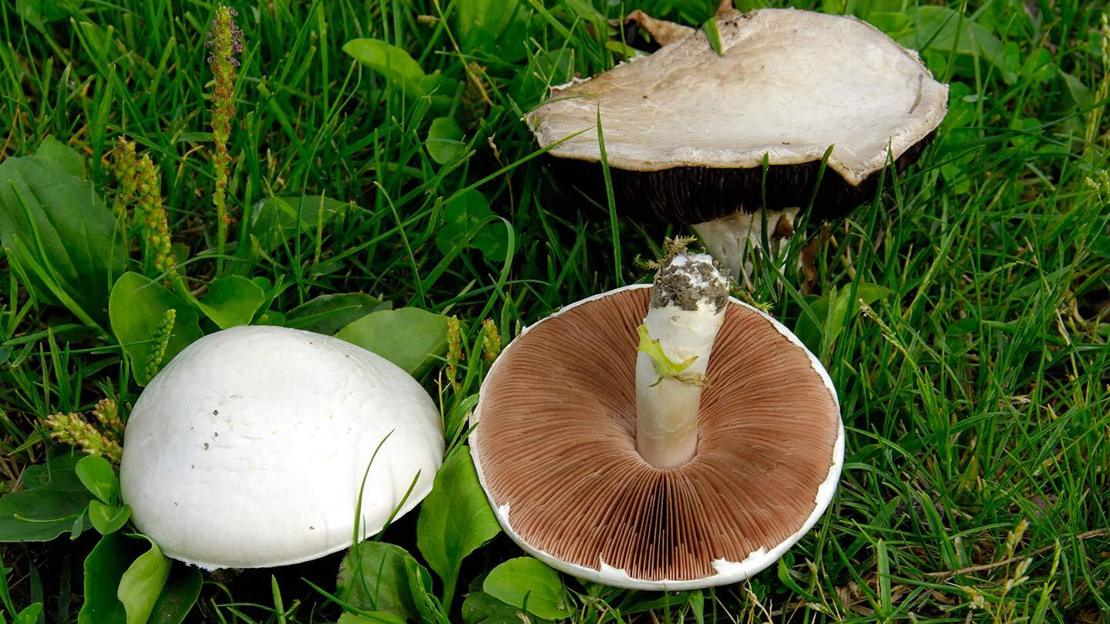
Field mushroom has declined over the years due to habitat loss caused by modern farming practices and is now quite rare in some parts of the UK.
What it looks like: a domed cap, flattening with age, up to 10 cm across. White silky skin overhangs the edge of the cap. The white stem has a small ring, and tapers at the base. Deep pink gills turn brown then almost black as it matures. It smells pleasantly mushroomy.
Don’t confuse it with: the poisonous yellow stainer (Agaricus xanthodermus). It looks similar but bruises bright yellow and smells of antiseptic.
Where to find it: in short grass on lawns, parks and pastures, usually in rings.
How to use it: field mushroom is very versatile – use how you would any supermarket mushroom. Great in risottos, omelettes, soups, sauces, casseroles and with your fry up.
Penny bun (Boletus edulis)
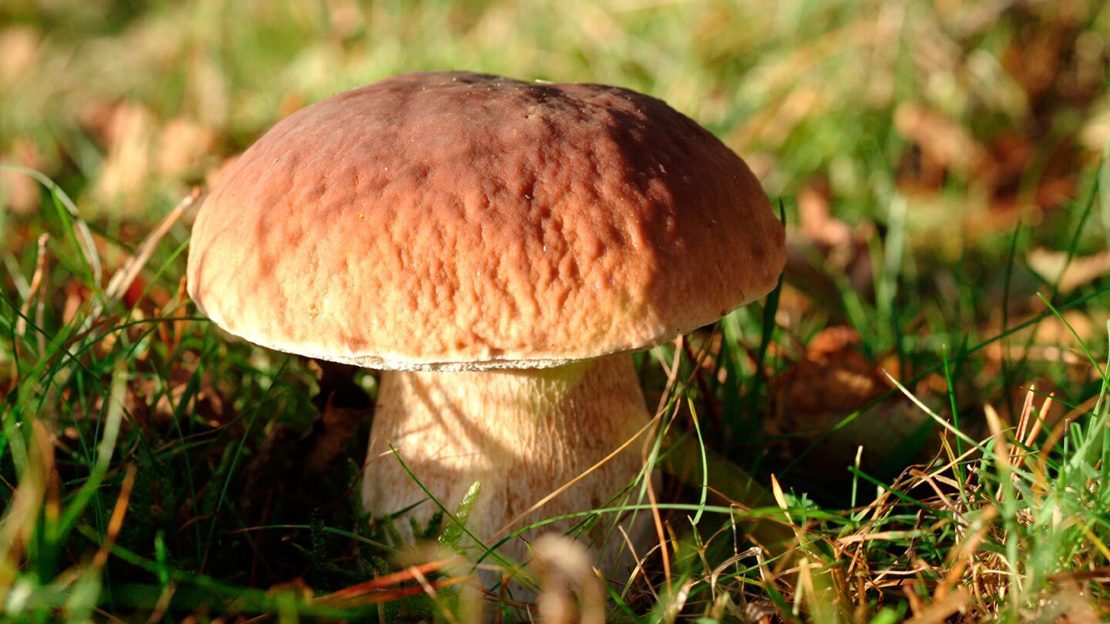
Penny bun is also known as porcini, porcino and cep. It’s one of the most sought-after wild mushrooms in Europe with a fine flavour and texture.
What it looks like: the cap looks like a crusty bread roll, brown and dimpled with a paler edge, 7-30 cm across. Underneath it is white with fine pores that age to yellow then turn green and spongy. The stem is thick and swollen, pale brown with a white network pattern on the upper part.
Don’t confuse it with: the similar-looking bitter bolete (Tylopilus felleus) which isn’t poisonous but tastes awful. The poisonous Devil’s bolete (Rubroboletus satanas) has a bright red stem and is very rare.
Where to find it: it grows from the ground near oak, beech, birch and coniferous trees. It prefers open ground particularly wood edges and grassy clearings.
How to use it: considered the most delicious of all wild mushrooms, it’s best when fully developed but still young. Use in any recipe but it’s amazing in risottos and omelettes. It can be sliced thinly and dried on a warm radiator or oven (with the door open to allow the moisture to escape).
Identify fungi on the go
Discover fungi when you're out and about with your own pocket-sized identification guide to the UK's common species.
Buy it now

